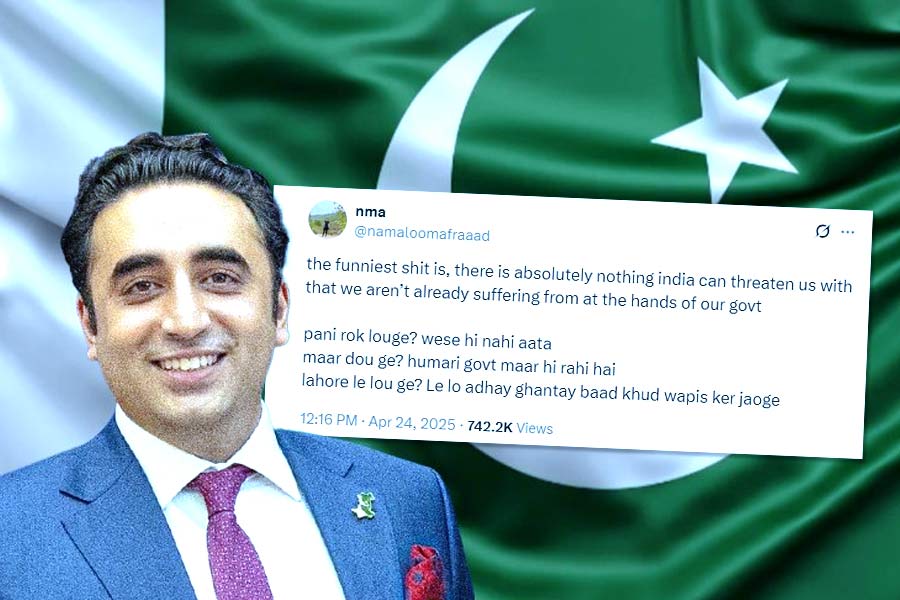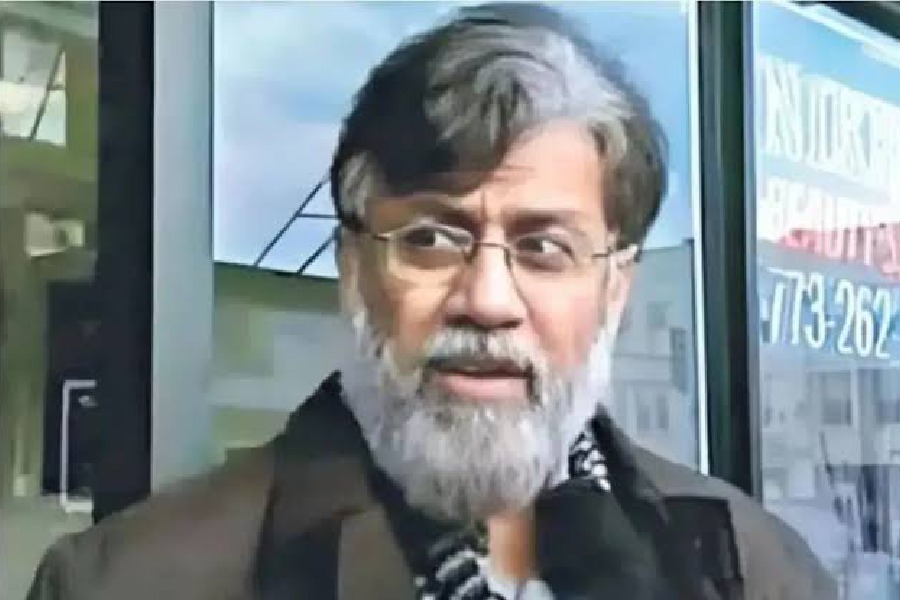 |
| A bar dancer at a rally in Mumbai on Monday to protest the closure order. (AFP) |
Mumbai, April 4: If the Maharashtra government goes ahead with its decision to close down dance bars around the city, there may be a heavy influx of people to Bengal.
In an upmarket ?ladies bar? in Malad (East), a Mumbai suburb, the good times are flowing.
A bunch of girls, stunning enough to star as item numbers in any self-respecting Hindi movie, are still trying to look like Isha Koppikar, their long hairs streaming, their short cholis glistening and their perfectly-toned bodies throbbing under the blue-and-purple slowly-turning spotlights.
But outside the ?stage? area, there are some other women who don?t look like film stars. Most of them are Bengalis ? an overwhelming number of Bangladeshis, the rest from Bengal.
Of the 60,000-75,000-strong population of bar girls in and around the city, the Bengali women are perceived to be the single-largest linguistic community in many estimates, if all the girls from ?north India? are not counted together.
?I don?t know about the whole of Mumbai, but in Malwani in Malad, where lots of bar girls stay and work in bars in Malad (East) and Goregaon (East), most of the women are Bengalis,? says Prabha Desai of Sanmitra Trust, which is focusing on its Malwani Project to integrate the bar girls into the mainstream.
?We have estimated that of the 6,000 women working in bars here, about 1,200 are from Rajasthan, about 500-600 are from around Delhi and about 2,000 are Bengalis,? says Desai.
The figure could hold for Mumbai, too. ?I think about one-fourth of the bar girls are Bengalis,? says J.K. Shetty, chairman, Federation of Hotels and Restaurants Association, the umbrella body of 50 hotel, bar and restaurant associations in Mumbai.
Many Bengali women work in Vashi and Navi Mumbai dance bars, which the government has decided to close down on ?moral grounds?. ?They make up a huge number,? says Usha Khere, owner of a bar in Vashi.
But if they form the most substantial part of the bar girls? community, the Bengalis belong to the lowest rung of this world of nocturnal pleasure.
?Bengalis are the least-paid for a variety of reasons,? says Desai. ?The dance bars are dominated by girls from Rajasthan. They are tall, fair, well-built, ?beautiful? in the eyes of dance bar managements and customers. Bars place a higher price on the fairer skin,? she adds.
?The Bengali women are usually shorter, darker and undernourished. The experience at our clinic also corroborates this. They are physically weaker, which goes against them in a dance bar environment. So while the strapping Rajasthani and Delhi women rule the dance floor, the Bengali women are often forced to be a ?service? girl or an ?entry girl?,? says Desai.
An entry girl is someone who doesn?t appear on the dance floor, but on the manager?s roster only, to be sent away with a customer to a lodge usually near the bar. A service girl waits on customers at the bar, getting a ?cut? from every drink bought off her ? though she has to entertain the customer in every way possible inside the bar; she can?t say no.
?The Bengalis are the most vulnerable,? says Desai. ?Many of the Rajasthani girls come from communities like Kanjar, Rajnat, Bachada, Bedia, Goli and Tawaif, and women from these castes have traditionally been entertainers of the rich. With Mumbai?s dance bars being the modern counterparts of their older workplaces, they have migrated en masse to Mumbai and carried on with their traditional way of life,? he adds.
The Bengalis are all migrants ? they have come to Mumbai looking for livelihood, mostly with their families, husbands and children. ?Their husbands are mostly economically sterile, so these girls provide for their families as well as remain more emotionally vulnerable,? says Desai.
?They earn much less, too ? about Rs 200 to Rs 300 per day, while the good-lookers may earn on an average Rs 1,000 per day and up to Rs 1 lakh on big days like New Year,? says Desai.
The divide seems apparent in other parts of the city, too. Faras Road in south Mumbai, near Kamathipura, the red light area, is known as the place where dance bar girls live. But while the Bengali women here live in small one-room tenements inside a narrow lane, the ?better? ones live in a chawl.
?Russian women have the higher end of the flesh trade here and Bengali women are filling up the other areas. Since women?s presence in the sex trade has to do directly with the economy, is it something to do with Communist regimes, erstwhile or present?? asks Desai.










